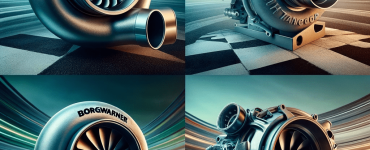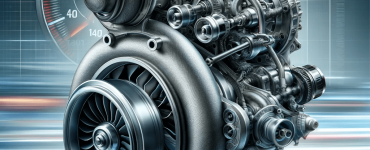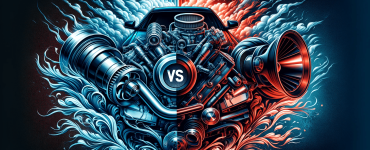Turbocharger vs Supercharger: Efficiency Comparison
Key Takeaways
| Aspect | Turbocharger | Supercharger |
|---|---|---|
| Definition | Air compressor powered by exhaust gases | Belt-driven air compressor |
| Efficiency | Higher at optimal RPMs | Consistent across RPM range |
| Power Delivery | Gradual; known for turbo lag | Immediate response |
| Fuel Economy | Generally better | Lower due to engine drag |
| Suitability | High-performance & efficiency-focused vehicles | Vehicles requiring immediate power boost |
| Maintenance | Less frequent but complex | More frequent but simpler |
Introduction to Forced Induction: Turbochargers and Superchargers
The quest for enhanced vehicle performance and efficiency has led to significant advancements in forced induction systems. Turbochargers and superchargers are at the forefront of this evolution, each with unique attributes. This article delves into the efficiency comparison between these two systems, offering insights for automotive enthusiasts and everyday drivers alike.
Turbochargers: The Efficiency King
How Turbochargers Work
A turbocharger uses the engine’s exhaust gases to spin a turbine, which in turn drives a compressor. This compressor pushes more air into the combustion chamber, increasing power and efficiency.
The Efficiency Edge
- Optimized Fuel Consumption: Turbochargers are known for improving fuel efficiency, especially at high RPMs.
- Reduced Engine Size: Often enables downsizing of engines without sacrificing performance.
Performance Characteristics: Turbochargers shine in delivering more power over a wider RPM range, making them ideal for both high-performance and efficiency-focused vehicles.
Read our guide: Best Supercharger for 6.2 Silverado
Superchargers: Immediate Power Delivery
Understanding Superchargers
Unlike turbochargers, superchargers are mechanically driven, typically by a belt from the engine’s crankshaft. This direct connection provides immediate throttle response.
Consistent Performance Across RPMs
- Instant Power: The belt-driven mechanism allows for a consistent power boost across the engine’s RPM range.
- Simplicity and Reliability: Generally simpler and more reliable due to fewer components.
Drawback: The mechanical drive can lead to increased fuel consumption, as it draws power directly from the engine.
Check out: Supercharger for 5.7 Hemi Challenger
Comparative Analysis: Turbocharger vs Supercharger
| Factor | Turbocharger | Supercharger |
|---|---|---|
| Efficiency | Higher at higher RPMs | Lower due to engine drag |
| Power Delivery | Gradual increase | Immediate boost |
| Maintenance | Complex | Simpler |
| Cost | Variable | Generally lower |
| Suitability | Vehicles requiring efficiency at high speeds | Vehicles needing instant power |
Key Considerations
- Vehicle Application: The choice between a turbocharger and a supercharger depends on the vehicle’s intended use and performance goals.
- Maintenance and Longevity: Turbochargers might require more complex maintenance, while superchargers, being simpler, often have fewer issues but require more frequent checks.
For Jeep owners: Supercharger for Jeep JK: Ultimate Guide

The visualization above compares turbochargers and superchargers across various aspects, including fuel efficiency, power delivery, maintenance complexity, cost, and suitability for high speeds. Each aspect is rated out of 10, providing a clear perspective on how each system performs in these key areas.
Conclusion on efficiency comparison
In the turbocharger vs supercharger debate, efficiency plays a pivotal role. Turbochargers generally offer better fuel efficiency and power at higher RPMs, while superchargers provide immediate power boost but at the cost of increased fuel consumption. The choice ultimately depends on the specific needs and preferences of the vehicle and driver.




